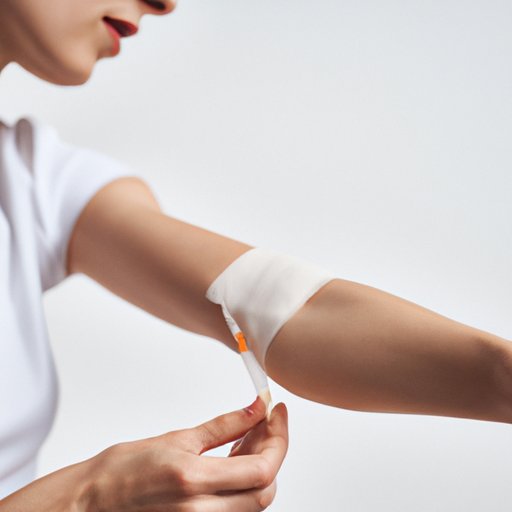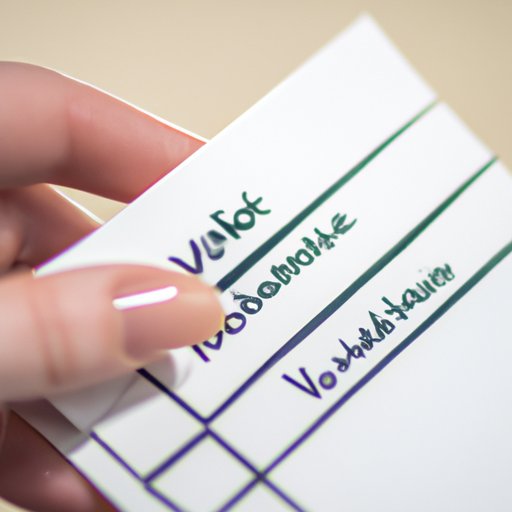
I. Introduction
Cuts and scrapes are a common occurrence for most people. It is important to know how to stop bleeding quickly and effectively to avoid infections and further complications. This article provides a comprehensive guide on how to stop a cut from bleeding and keep it safely and hygienically treated.
II. 5 Simple Steps to Stop a Cut from Bleeding Quickly
Here are five essential steps to stop a cut from bleeding:
- Clean the wound using soap and water.
- Apply pressure to the wound with a clean cloth or bandage for several minutes until it stops bleeding.
- Elevate the area to reduce blood flow and promote clotting.
- If bleeding doesn’t stop, apply a styptic pen or a wound sealant spray to the wound.
- Cover the wound with a sterile bandage or gauze to protect it from outside elements.
Each of these steps is important in achieving clotting and stopping the bleeding. Remember to always keep the wound clean and covered to avoid infections.
III. Emergency First Aid: How to Stop a Cut from Bleeding
In cases of severe bleeding, these steps may be taken:
- Call for emergency medical aid if necessary.
- Remove any clothing that is obstructing the wound site.
- Apply direct pressure with a sterile dressing or clean cloth.
- If direct pressure doesn’t work, try a tourniquet as a last resort.
- Seek medical attention as soon as possible.
It is important to stay calm and take action immediately in cases of severe bleeding. The aim is to stop blood loss and avoid further complications such as shock or loss of consciousness.
IV. Tricks and Techniques to Control Blood Flow from Minor Cuts
There are many different types of cuts, and different techniques may be required to stop bleeding:
- Minor cuts on the fingers and hands can be treated with cold water and ice to reduce swelling and promote clotting.
- Cuts on the scalp can be controlled with a cold compress and elevation of the head.
- If a cut is bleeding profusely, then you should seek medical attention immediately. You can never be too careful when it comes to the safety of your health.
Remember to always keep the wound clean and covered to avoid further complications.

V. Bleeding Woes: How to Stop a Cut from Getting Out of Hand
If a cut isn’t healing or shows signs of infection, then it is time to take action:
- Signs of infection include redness, swelling, drainage, fever, or an excessive amount of pain.
- If the symptoms aren’t improving, it’s important to seek medical attention.
- To stay safe and avoid further complications, you can also keep a first-aid kit on hand.
VI. The Ultimate Guide to Treating Cuts: Quick Tips to Stop Bleeding
This section provides quick tips and tricks for handling cuts and bleeding:
- Make sure to clean your hands thoroughly before and after treating a wound.
- Always use sterile, clean materials to avoid infections.
- If a wound appears deep or has been contaminated, it’s important to seek immediate medical attention.
VII. Be Prepared: How to Handle Cuts and Bleeding in Everyday Life
The best way to handle cuts and bleeding in everyday life is to avoid them whenever possible:
- Wear appropriate clothing and equipment when engaging in dangerous activities.
- Keep a first-aid kit at home, in your car, or at work in case of an emergency.
- Stay alert and aware of your surrounding to avoid injuries.
If an emergency does occur, remember to stay calm and follow the steps for treating a cut or bleed outlined in the previous sections.
VIII. Conclusion
Understanding how to stop bleeding quickly and effectively is vital for proper wound care. By following the steps and tips outlined in this article, you can protect yourself and others from unnecessary infections and complications. Always remember to stay calm and carefully assess the situation before taking any action.
If you found this article helpful, please share it with others to spread the word about proper wound care and first-aid.




